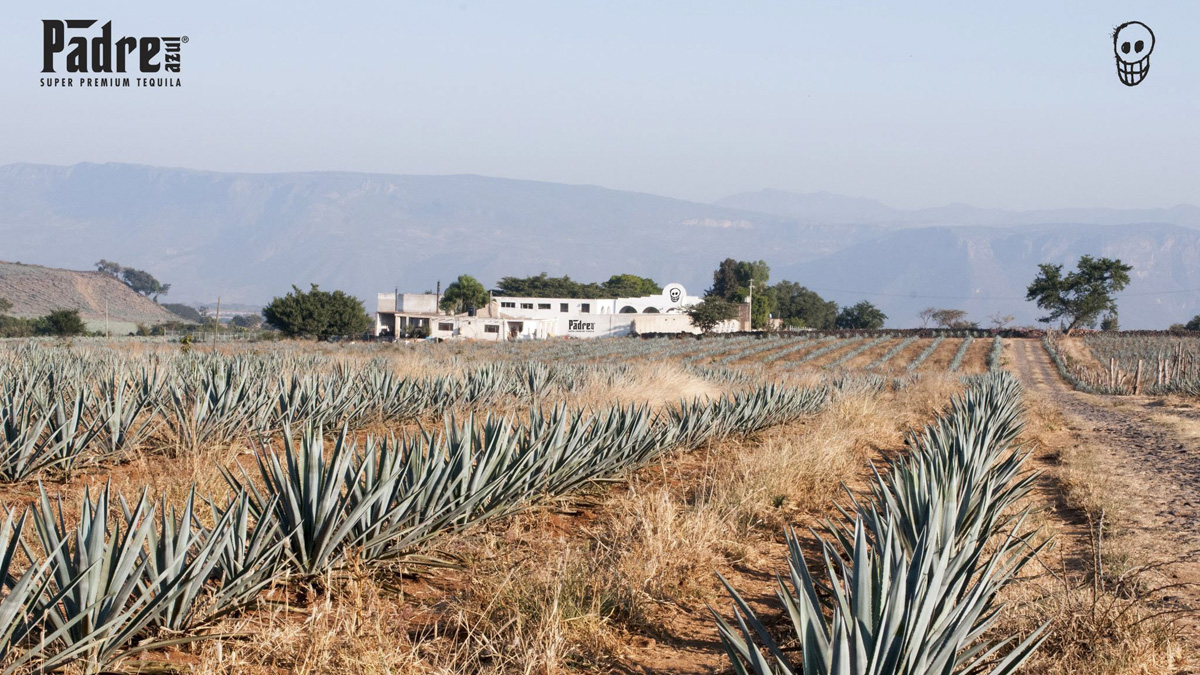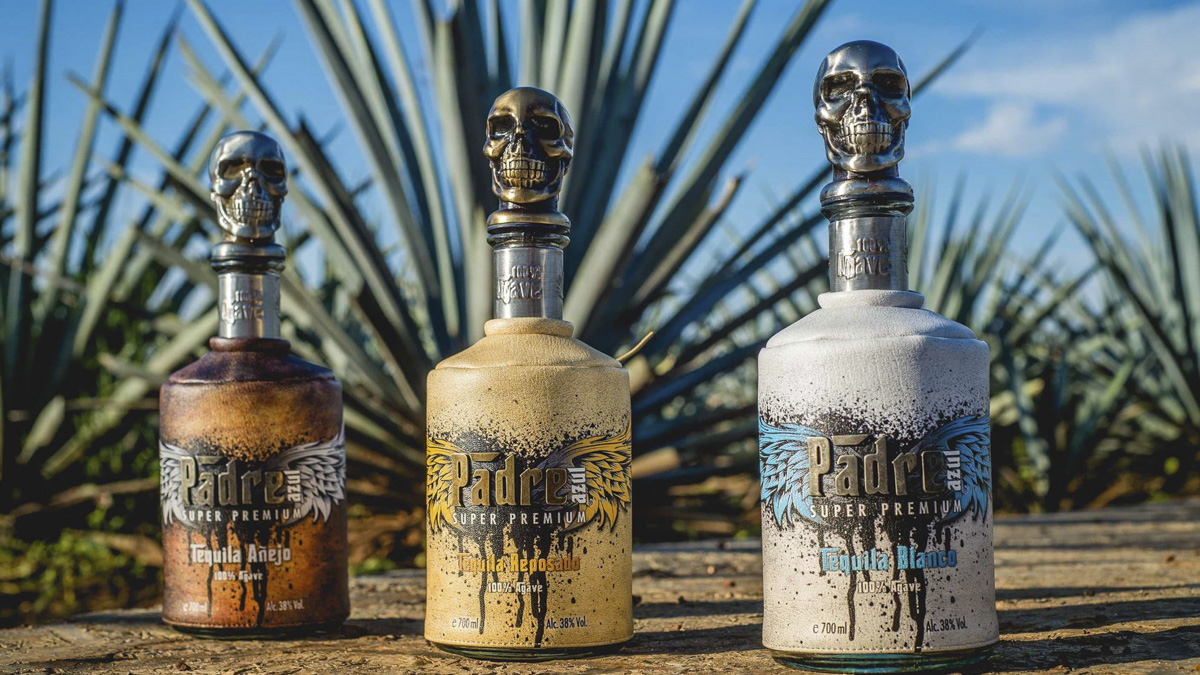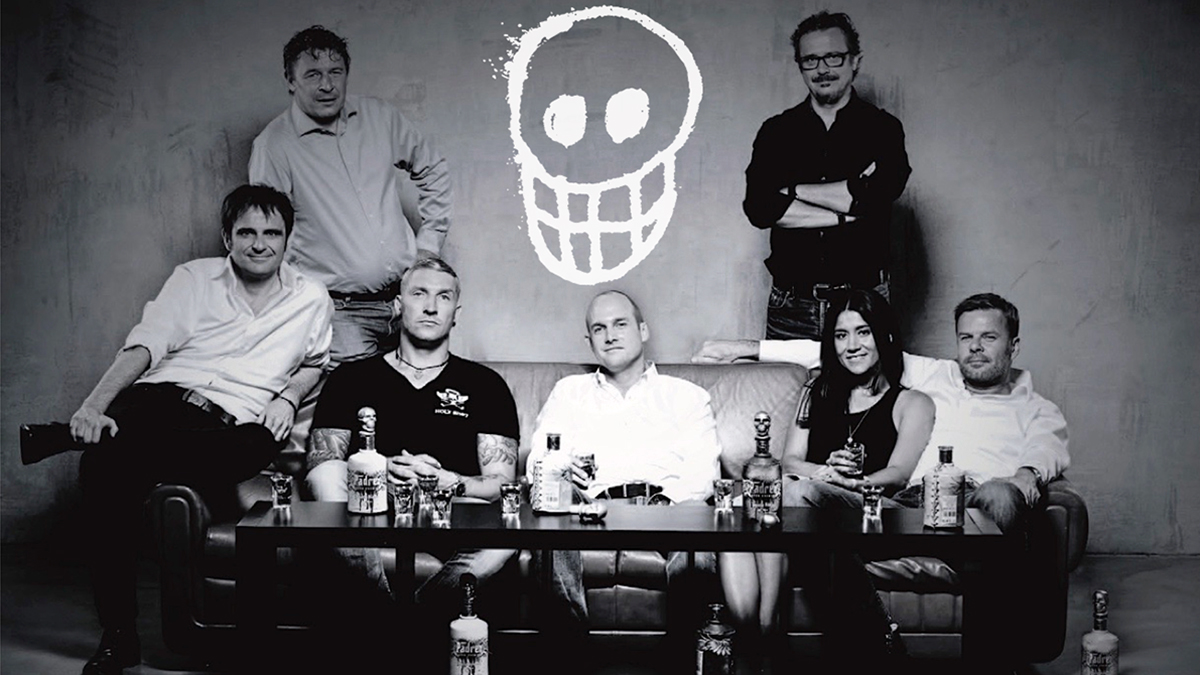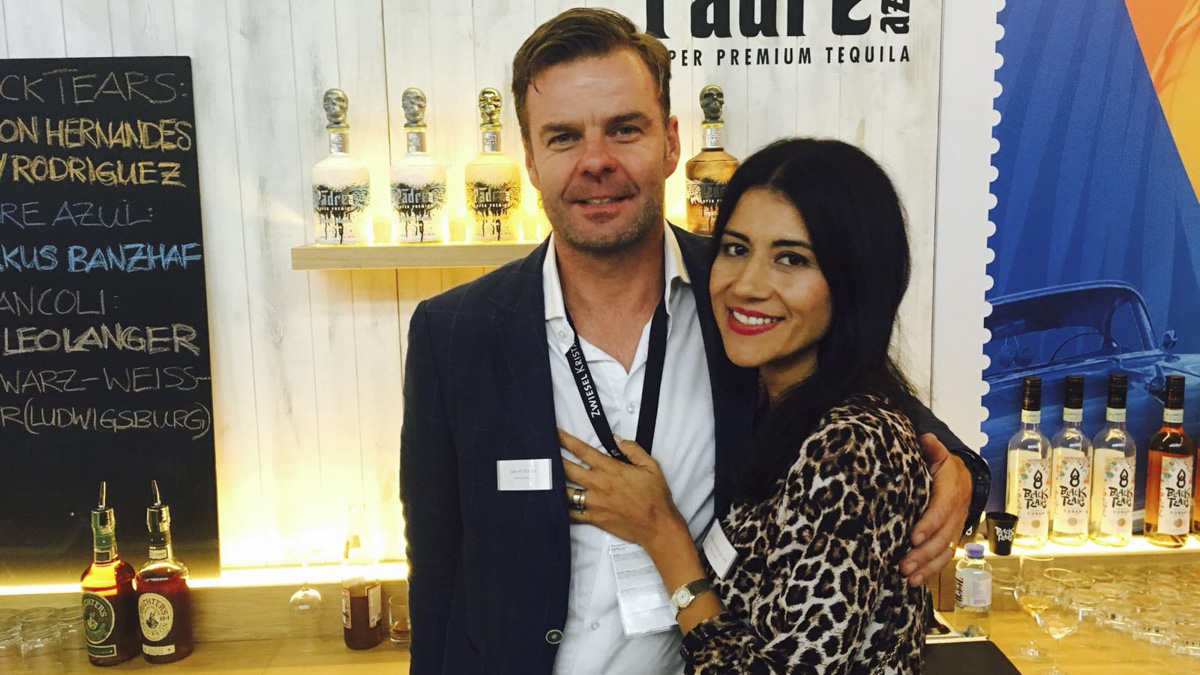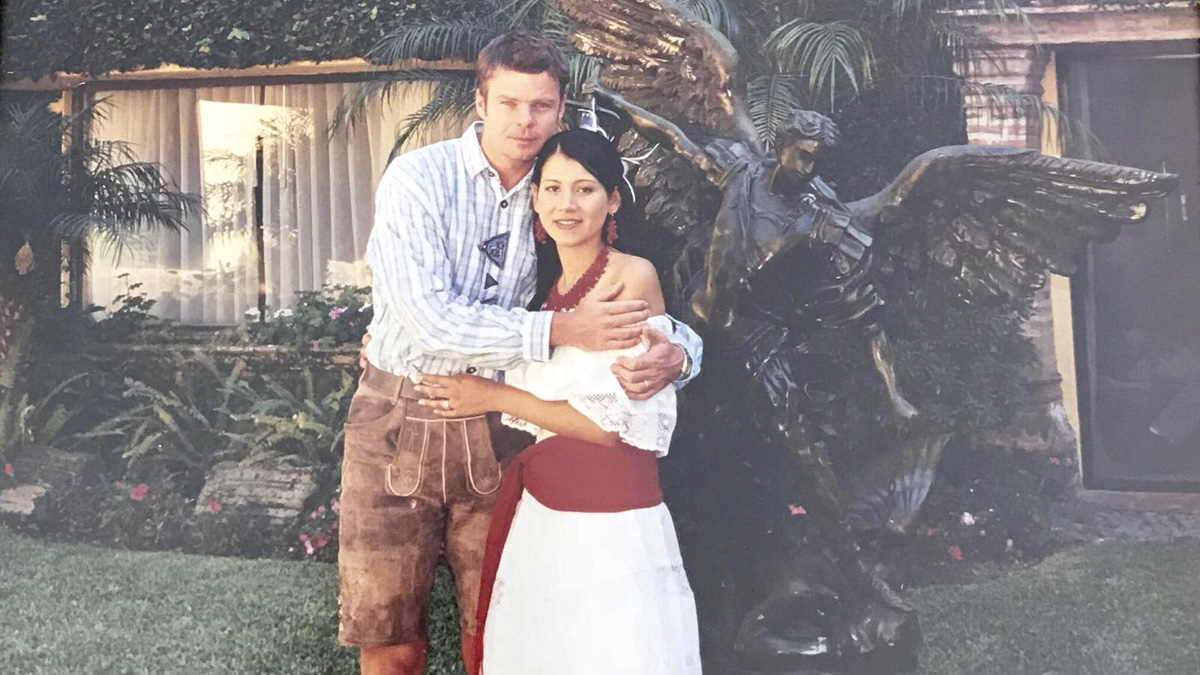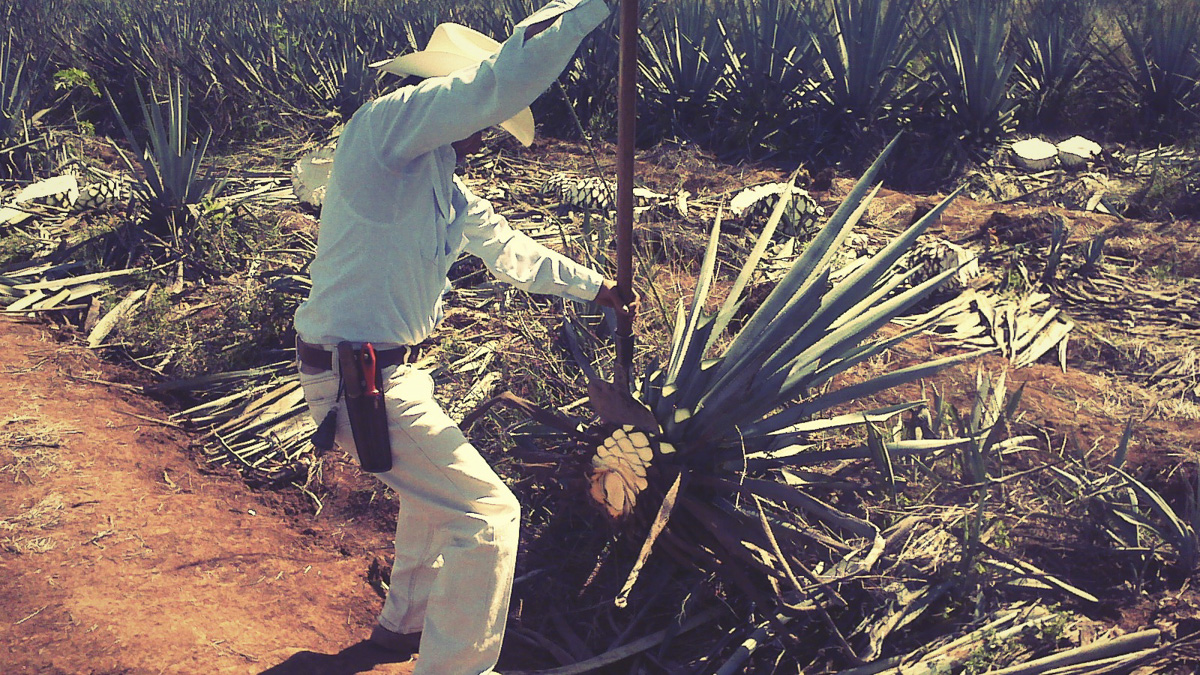The No.1 rule of tequila is that it must come from Weber agave and Tequilana agave plants, native only to Mexico. So how in the world did the Austrian co-founder of Padre Azul Tequila, H.P. Eder, go from being the son of a Schnapps distiller to creating his own Mexico-based tequila label?
Love.
Eder was working in Heidelberg, Germany, in the banking industry when Adriana Alvarez Maxemin (his future wife) studied there. They fell in love and, eventually, it was time to meet the parents — or, in Adriana’s case, a huge Mexican family that brought 300 people to a welcome party. Eder’s future father-in-law sat down and had a tequila with him — the first, real tequila of Eder’s life.
“It was the most delicious spirit I had ever had,” Eder tells The Manual.
Now, Padre Azul (Spanish for “blue father”) is a family business in every sense of the word, pulling from Eder’s own distilling roots and digging deep into Mexican spirits and culture. We sat down with Eder to talk Vogelbeerschnaps, the best hidden restaurants in Mexico, and the exact temperature to chill your Padre Azul.
The Manual: What was it like growing up distilling as a boy?
H.P. Eder: I grew up in Rauris, a small village in the middle of the Alps. My parents have a farm and small hotel there and I grew up in the rhythm of nature. One crucial part of our calendar was making Vogelbeerschnaps, which is a typical handcrafted spirit made in this region. It is made of rowanberry, which grows on trees. Harvesting starts in September and all of our family members, uncles, and aunts were involved for more than four weeks during harvest. After harvesting the fruit, you have to split the berries from small branches then crush them and put them in big barrels for fermentation. The mash then rests more than five months in the barrels and is twice distilled. This was always a big family event.

TM: Vogelbeerschnaps is your father’s claim to fame in the spirits world. How did he create it?
HE: Every distiller in this region has his secrets and my father’s Schnaps always turned out to be one of the best, selling out before the others. One bottle is more than $120 and is treated like gold. My father distilled strictly according to a more than fifth-generation family recipe.
TM: What happened after you tasted real tequila for the first time?
HE: I was really amazed and wanted to bring this quality to Europe because people needed to taste it. Since I grew up distilling with my father, I was very keen on how it is produced and made. I was and still am fascinated by the friendship-orientated culture and Mexican way of life. It is such a big contrast to our time-focused culture, and one thing is almost always present: tequila.
TM: How many members of your family are involved in Padre Azul?
HE: My father-in-law Francisco Alvarez manages our production. He actually gave us the idea to distill our own tequila. And Erika Sangeado, my wife’s cousin, is our master distiller

TM: As a man who shaped his life around Mexican culture, what are your insider travel recommendations?
HE: I love Adriana’s hometown, Tlaquepaque. It’s a typical Mexican village with lots of restaurants and handcrafted shops. Make sure to have some traditional food at Casa Luna or Casa Fuerte, and a nice boutique hotel is Hotel Quinta San Jose. Don’t miss a trip to Tapalpa in the countryside and on Thursdays, be sure to go to Tonala, where there is a big market. I also love Chipas and San Cristobal de las Casa and doing a hike to San Juan Chamula.
TM: Favorite hidden restaurants in Mexico?
HE:
- Quintonil, Mexico City (high-end Mexican food)
- Casa Oaxaca, Oaxaca
- Lobster and bean tacos in Rosarito
- PalReal, Guadalajara (modern traditional Mexican food)
TM: Back to tequila: How would you describe the taste of Padre Azul?
HE:
- Silver: The first smells are the cooked agave, vanilla, and coconut. Then you get citrus such as grapefruit and lemon along with vapors like English mint, finishing with fruit compote, cherry, peach, and pineapple. In the mouth, it’s velvety and intense.
- Reposado: The first impression is a balance between distillation and the flavors given by the barrel such as fruit compote, pear, banana, and dried orange. You’ll then notice the cooked agave and delicate hints of raw agave, which smells slightly herbal. Vanilla, caramel, coconut, and white chocolate result from resting in barrels.
- Añejo: The flavors developed in the barrel like coffee, burnt caramel, vanilla, and caramelized nuts are very expressive. Sweet hints of dried fruits such as cherry, apricot, and cooked agave. It is complex, sophisticated, and balanced. You will taste flavors like vanilla, caramel, and dried fruits. It is silky, sweet and has a long finish.

TM: How do you recommend drinking Padre Azul?
HE: For silver, we recommend first chilling to 60 degrees Fahrenheit, then letting it air out in the glass for about 20 minutes to get the most flavors and aromas. Reposado, enjoy at around 64 degrees Fahrenheit and let it air out in the glass for about 20 minutes. And añejo the same, but chill to 68 degrees Fahrenheit.
TM: You age your añejo longer than usual. Why and how long?
HE: It is aged for 18 months. This is because it gets smoother the longer it’s in the barrel and also can extract more flavors like coffee, burned caramel, caramelized nuts, and dried fruits.
TM: Many people associate tequila with cheap brands and cringe-worthy aftertastes. Is there a luxury tequila revolution taking place?
HE: I had the same experience. I wasn’t familiar with such a high-quality tequila when I first visited Mexico. Certain brands destroyed the reputation of tequila completely and that’s why we started our endeavor —to be a part of the tequila revolution! We are discovering the true value of tequila as a luxury spirit and we are bringing our product around the world. I truly believe luxury tequila is the next big thing in the spirits business … Which other spirit do you know of where the original plant grows for eight years?
